Fideua is Spanish Paella’s lesser-known cousin, but this fragrant seafood recipe made with vermicelli noodles is just as delicious! Impressive yet simple to make, this traditional dish comes together in under an hour.
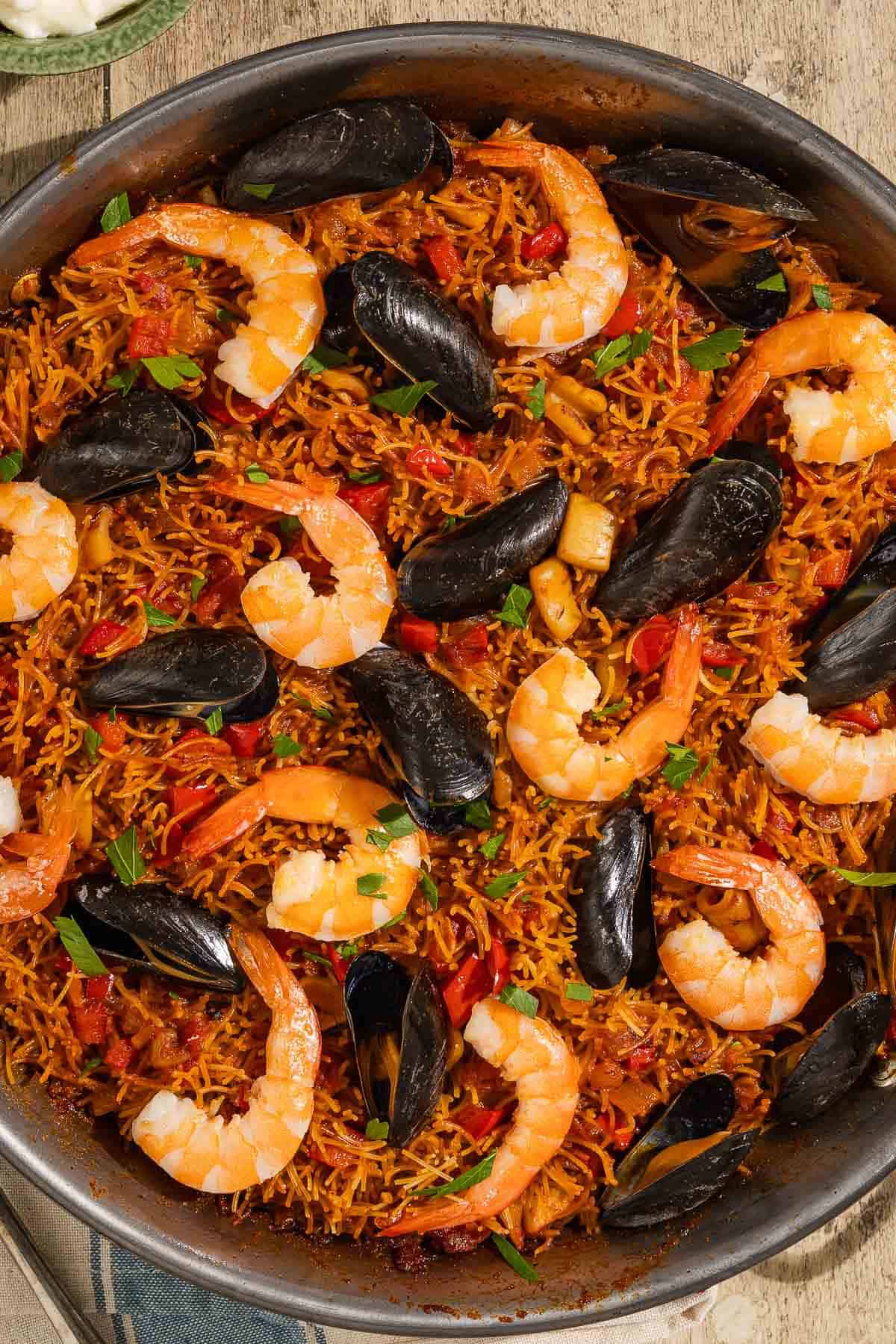
Though Seafood Paella and Chicken Paella may get all the attention, I am partial to Fideuà, a seafood pasta with delicate thin noodles, saffron, and lots of fresh shellfish like squid, mussels, and shrimp or prawns. Loaded with incredibly vibrant flavor and texture, it’s a regular choice on restaurant terraces overlooking the beach where I live in Barcelona.
I always assumed Fideuà was too difficult to make at home, but once I moved back to Barcelona, my friend Carla, insisted it could be done and taught me how to make it. I’ve been hosting friends for lunch on Sundays, and this Fideuà recipe was a memorable, festive, and beautiful centerpiece to share, and just as tasty as the seaside restaurant versions I’ve tried.
I’m excited to pass on the recipe to you—just add White Sangria and the party is ready to begin!
Table of Contents
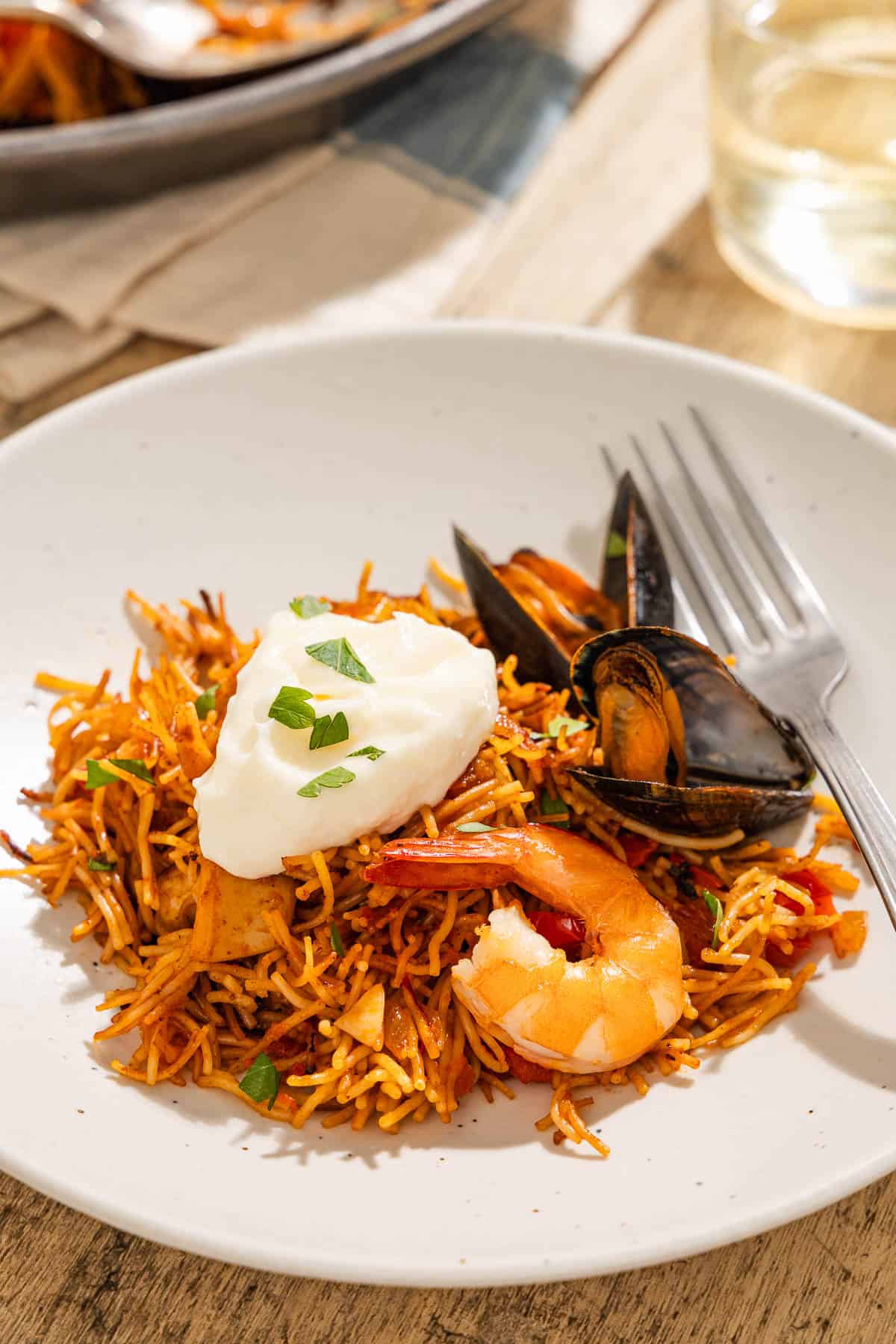
What is Fideuà?
Fideuà is similar to paella but made with wheat vermicelli noodles rather than rice. Legend has it, a chef in the coastal city of Gandía didn’t have enough time for rice to cook so he decided to use quicker-cooking pasta instead.
Like paella, Fideuà originated in Valencia and spread throughout the country as a staple of Spanish cuisine. In Valencia, they use fideos (wheat vermicelli pasta, which you can find at our shop) or elbow macaroni. Here in Barcelona, I’ve only seen it with fideos.
Seafood is the most well-known version of this dish, but like paella, you can make it with chicken, rabbit, or even vegetarian. There is no one right way to make Fideuà and it varies by region and cook. But everyone has a strong opinion about how to make the best version. Discussions can get as heated as talking about politics!
I call this “Catalan fideuà” because this is how I learned to make it in Barcelona, based on the ones I’ve tried at restaurants and a generous lesson from my friend, Carla.
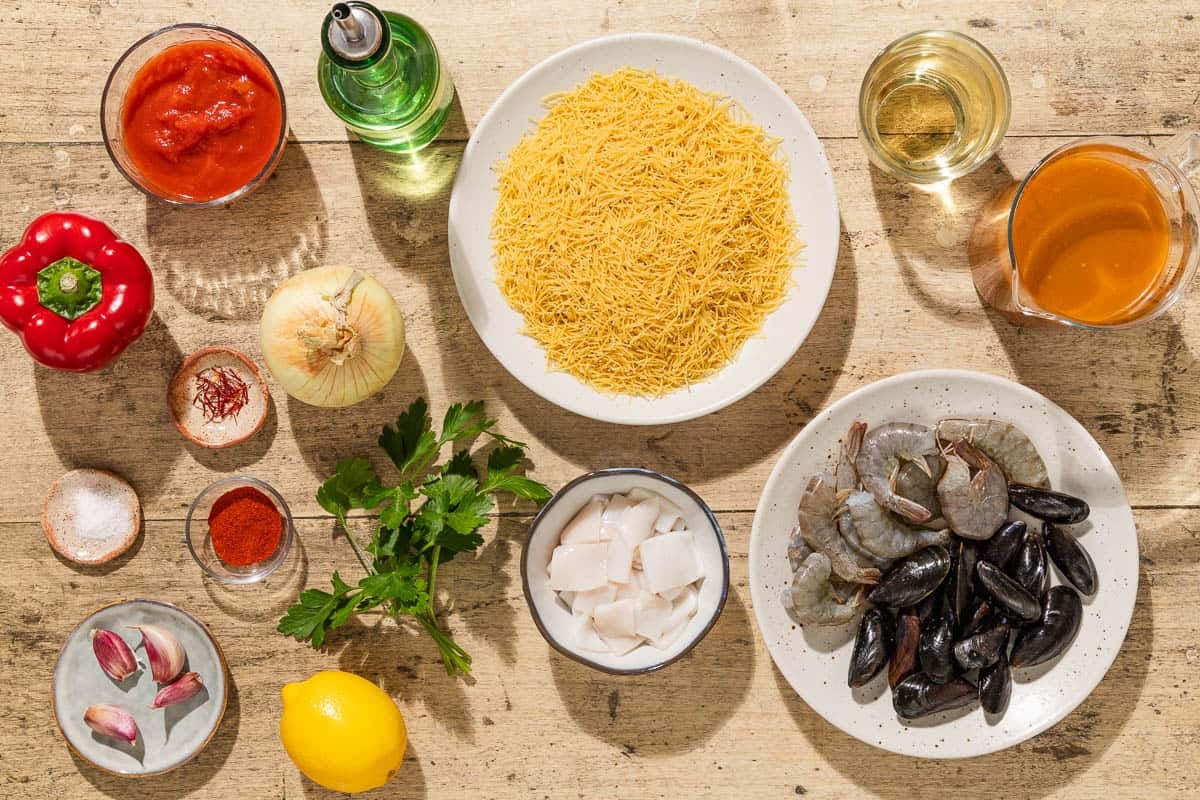
Ingredients for Catalan Fideuà
The secret to a good fideuà is using the freshest seafood possible, good quality seafood stock, and deep caramelization in the sofrito.
- Extra virgin olive oil: I love the flavor of cooking with extra virgin olive oil, like our peppery Spanish Hojiblanca. My friends use a generous pour to coat the bottom of the pan, but I tend to do a thin layer to keep it lighter.
- Wheat vermicelli noodles (Fideos): Short wheat vermicelli noodles are the most common pasta used for fideuà. In Valencia, you’ll also find it made with elbow macaroni.
- Shrimp: Whole shrimp is the most traditional. The shrimp is peeled by diners at the table who would balk at the lost flavor otherwise (the shells have a lot of flavor, so it can be worth it if you’re willing to get your hands dirty). You can absolutely use already peeled shrimp, in which case it’s fideuà del señorito, or “gentleman’s fideuà.” For the best of both worlds, I like to sear the shrimp in the shell, peel and add the shells to the simmering seafood stock, then serve the fideuà with the cleaned shrimp.
- Sofrito: Sofrito is the aromatic base for most Spanish cuisine, the ingredients can vary slightly, but I use onion, red bell pepper, garlic, and tomato, and deeply caramelize them for a rich flavor.
- Squid: Use cleaned fresh squid or thawed frozen squid. In Spain it’s more common to use cuttlefish, but squid will work just as well.
- Paprika: Smoked sweet paprika adds a smoky depth that complements the savory caramelization. You can stock up on Spanish smoked paprika at our shop, or use standard or sweet paprika if you have it on hand.
- Mussels: Mediterranean mussels are very similar in taste and texture to the blue mussels along the Eastern US and North Atlantic. I prefer to buy mussels the same day I plan to cook them. They should smell briny like the ocean and not fishy.
- White wine: Use a dry white wine like Sauvignon Blanc or Pinot Grigio. You can substitute the wine with seafood stock.
- Saffron: A little saffron goes a long way. It’s hard to describe the taste of saffron, but it’s harder to imagine this fideua without it, and there’s no substitute for saffron. It’s pleasantly bitter, floral, and grassy. It also lends a beautiful golden hue.
- READ MORE: What Is Saffron? An Essential Guide.
- TRY IT: Order our pure Moroccan saffron threads from the Atlas Mountains at our spice shop.
- Fish stock: The stock adds a lot of flavor and richness to this seafood pasta. So it’s important to use the highest quality seafood stock available. Your local fish market is a good place to check as some carry house-made fish stock.
Ingredient Spotlight: Vermicelli
Depending upon the country, you can find vermicelli noodles made from rice, beans, or wheat. Asian cuisines, commonly use rice and bean vermicelli.
However, Vermicelli made with wheat, is used throughout the Mediterranean and Middle East. It’s a key component in pilafs, soups, and dishes like this Spanish Fideuà, where the noodles are called fideos.
They are a handy noodle to keep around as they cook quickly and you can use them in a variety of dishes, even desserts!
- TRY IT: Wheat Vermicelli isn’t the easiest to find in the US, so we offer it in our shop.
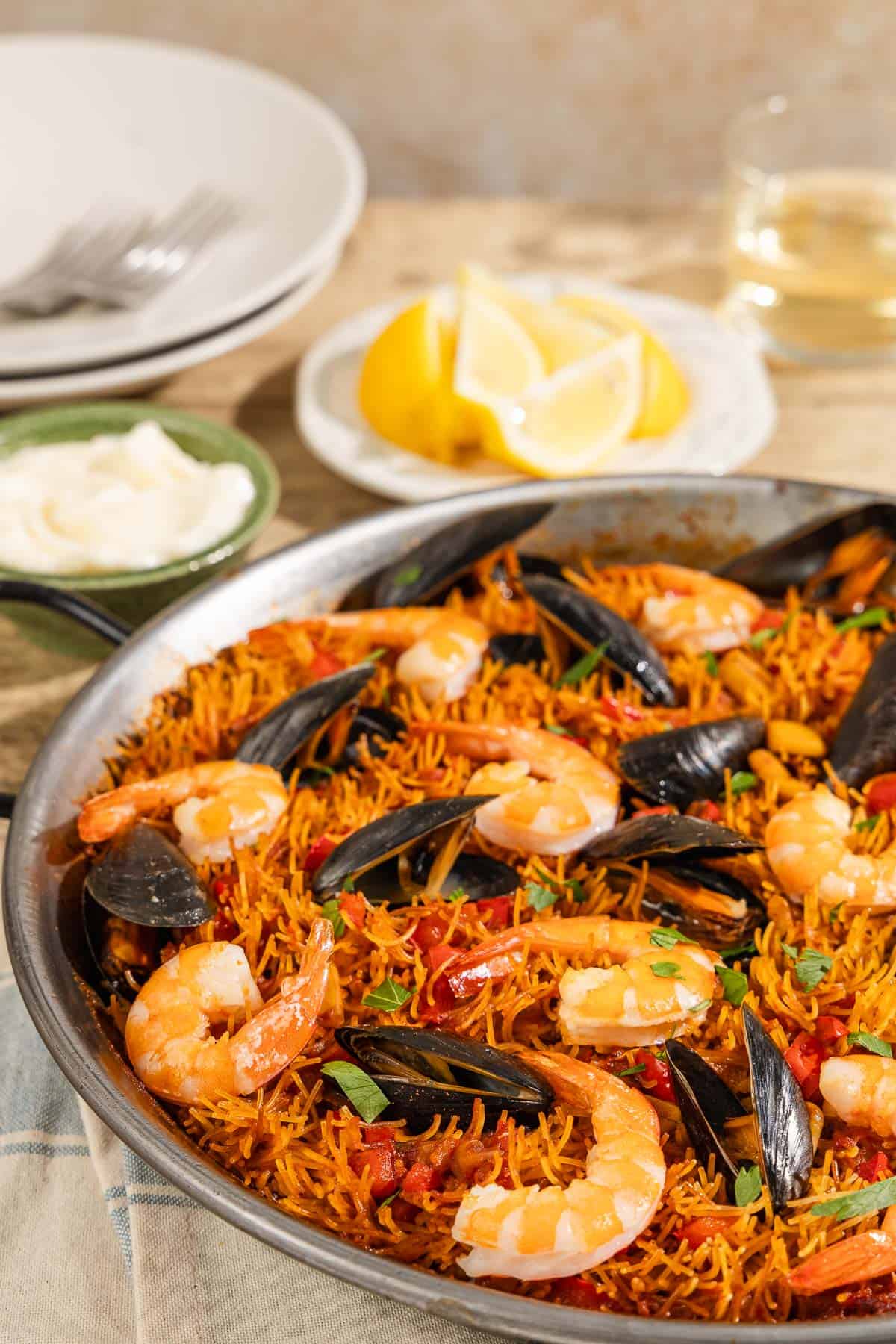
How to Make Catalan Fideuà
Depending on how you source the seafood, most of the time is spent on this seafood recipe is prepping the seafood and chopping the ingredients for the sofrito. Once everything is prepped, it’s surprisingly just 30 minutes of cooking.
- Get your ingredients ready. Finely dice 1 onion and 1 red bell pepper, and then thinly slice 4 garlic cloves. Scrub and debeard 1/2 pound of mussels, then clean 1/2 pound squid and chop into 1-inch pieces. You can peel and devein 12 jumbo shrimp, or leave them in their shell for a richer flavor.
- Heat the stock: In a medium saucepan over medium-low heat, bring 3 1/2 cups seafood stock to a simmer. Reduce the heat to low and keep the stock barely at a simmer.
- Toast the vermicelli noodles: Heat 1 tablespoon of olive oil in a large paella pan or a large heavy-bottomed pan over medium heat. Add 3 1/2 cup vermicelli noodles and toast, stirring with a wooden spoon to toast them evenly, until golden, about 5 minutes. Transfer the toasted fideos to a bowl and set aside.
- Cook the shrimp: Increase the heat to medium-high and add 1 tablespoon olive oil. Add 12 jumbo shrimp in a single layer and cook until seared, 1 to 2 minutes per side. Remove to a plate and set aside.
- Note: If you’re using unpeeled shrimp, sauté them in the shell. When they’re cool enough to handle, peel the shells. Add the shells to the seafood stock for an even richer flavor.
- Make the sofrito: Add 1 tablespoon of olive oil to the pan and add the diced onion. Cook until it’s soft and translucent, about 5 minutes. Add the squid and cook until the onions and squid are a deep golden brown, 3 to 4 minutes.
- Season. Add the red pepper and sliced garlic and cook until they begin to brown. Add the 1 cup canned crushed tomato (or grated fresh tomato), 1 teaspoon smoked paprika, 1 teaspoon salt, and 1 pinch saffron. Cook until the tomato reduces and the pan is almost dry, about 2 minutes.
- Cook the vermicelli: Pour in 1 cup white wine and let it reduce slightly for 1 minute. Stir in the toasted noodles. Pour in the hot fish stock (through a sieve if you saved the shrimp shells) and bring to a simmer.
- Simmer the remaining shellfish. Reduce the heat to low. Nestle the mussels into the broth and arrange the shrimp over the pasta. Cook without stirring until the pasta has absorbed all of the broth, about 10 minutes depending on the thickness of the pasta. There should be almost no bubbling.
- Garnish and serve: Remove the seafood pasta from the heat and let it sit, uncovered, for 1 minute before serving. Discard any mussels that haven’t opened. Garnish the top with parsley, and serve immediately with Garlicky aioli (if you’d like) and lemon wedges.
Tips for the Best Fideuà
Catalan food has a reputation for being unattractive, but I love how flavorful it is. It always tastes rich but never heavy. The reason for the color and richness is caramelization.
In fideuà, caramelization of each component is the key to developing that rich flavor without bogging it down with oil or other enriching ingredients.
Because caramelization of the ingredients is so important, many of the ingredients for this Spanish seafood recipe are cooked separately or in stages. The pan is hot and you’ll quickly move from one stage to the next. Here are some tips for success:
- Prep everything before you start cooking: For some recipes, I’ll prep as I go, but because everything is cooked quickly over high heat, it’s best to practice mise en place, or prepping the ingredients ahead of time and having them ready near the stove.
- Use a shallow pan with a lot of surface area. You can use a paella pan, a large sauté pan, or a shallow casserole dish. A heavy-bottomed pot allows for even heat distribution and a nice crust on the bottom of the fideuà without burning.
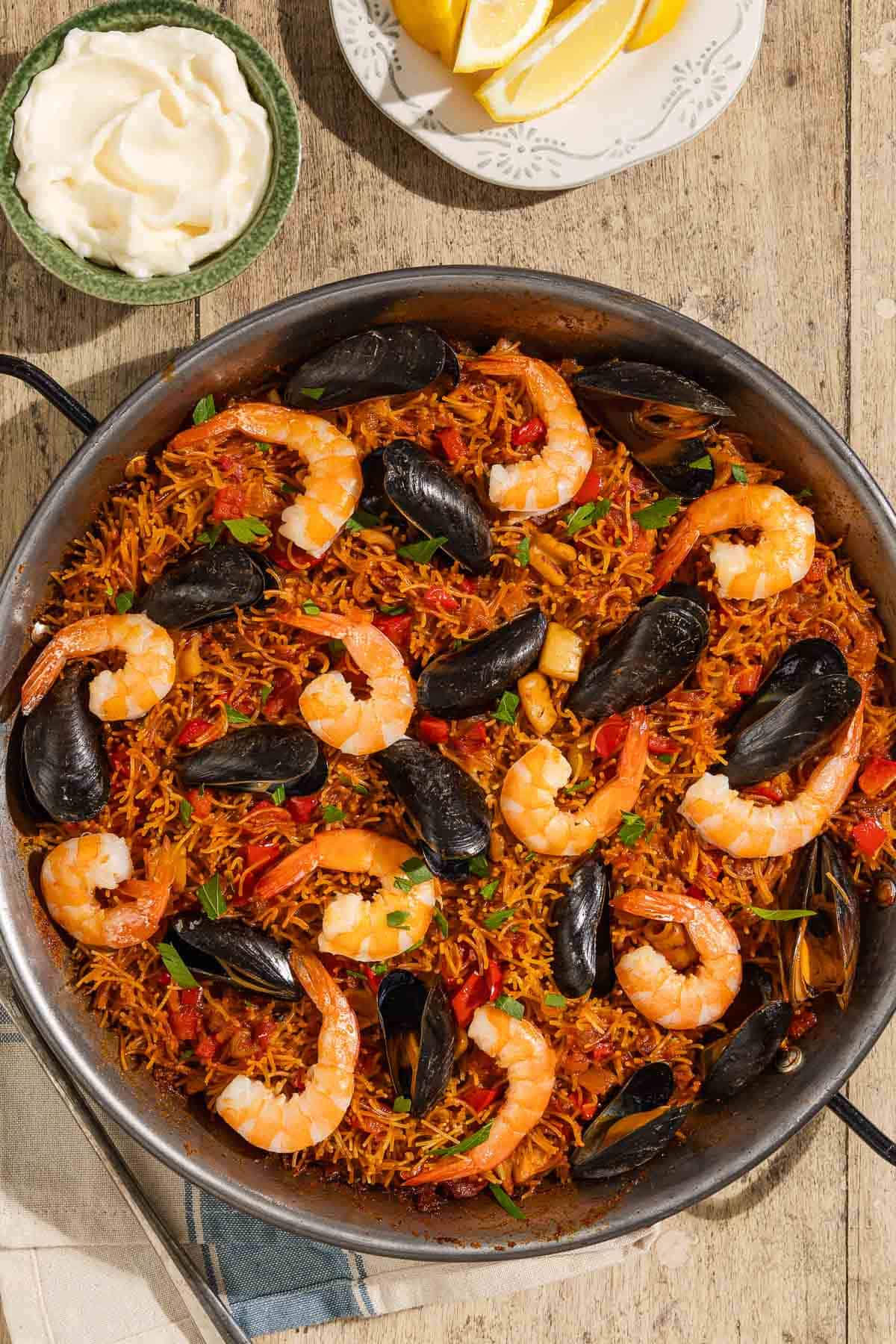
What to Use if You Don’t Have Vermicelli?
Many fideuà recipes outside of Spain suggest substituting the noodles for spaghetti or angel hair pasta and breaking them into small pieces. When I brought this up, both the Catalans and Italians at the lunch table were horrified.
Perhaps this is because it is such a traditional dish, but if you’d like to stay true to the tradition, Fideuà is sometimes made with elbow macaroni. If you can’t find the small vermicelli noodles or order them from our shop, I would suggest macaroni.
If you’re using macaroni, test for doneness when all the stock has been absorbed, and adjust the cooking time and amount of stock if needed. If you are fresh out of noodles of any kind and you want the flavors of saffron with a taste of Spain you can always make this lovely mussel, saffron, and chorizo stew recipe.
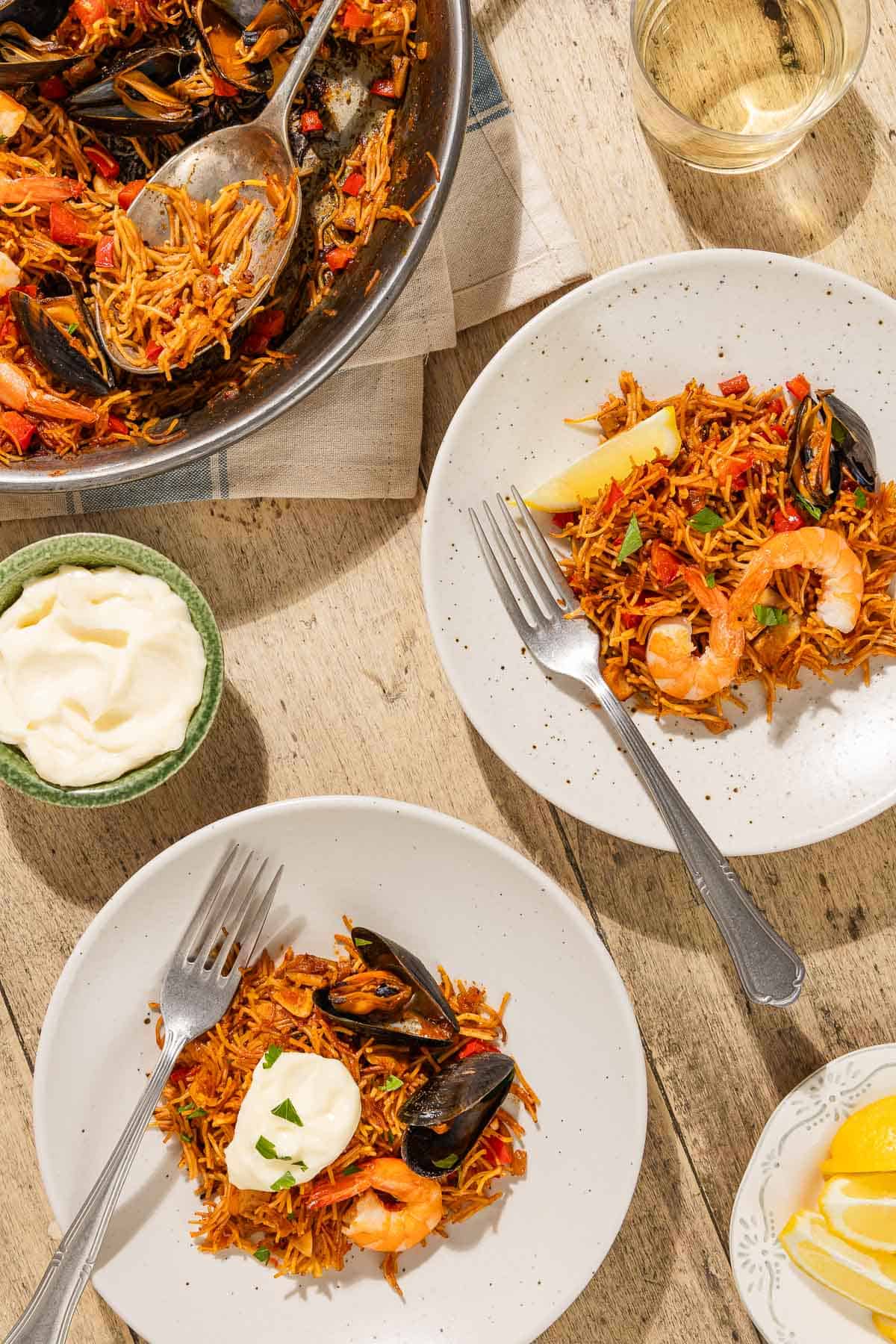
How to Serve Fideuà
I like to finish this seafood pasta with a generous garnish of finely minced flat-leaf parsley, a squeeze of juice from a lemon wedge, and a big dollop of Garlic Aioli.
For a full Catalan meal, I’d start with Patatas Bravas and Roasted Artichoke Hearts. Then I’d serve the fideuà with Pan con Tomate and a glass of white wine or White Sangria. For dessert, you can’t go wrong with Crema Catalana.
More Spanish Seafood Recipes
Spanish
Easy Seafood Paella Recipe
Spanish
Stuffed Tomatoes with Tuna
Fish and Seafood
Mediterranean-Style Steamed Clams Recipe
Browse all Mediterranean recipes.
Visit Our Shop
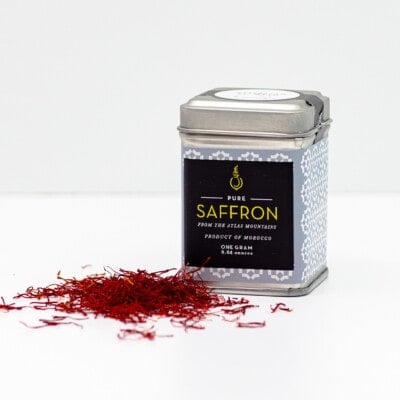
Try Our All Natural Saffron
Moroccan saffron threads, sourced from the Atlas Mountains.
Catalan Fideuà (Spanish Seafood Pasta)
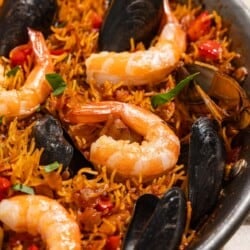
Ingredients
For the Fideuà
- 3 1/2 cups (28 ounces) fish stock
- 3 tablespoons extra virgin olive oil (divided)
- 14 ounces wheat vermicelli noodles (fideos size 0)
- 12 jumbo shrimp (in the shell, or shelled and deveined)
- 1 onion, finely diced
- 1/2 pound fresh or thawed frozen squid, cleaned and chopped into 1-inch pieces
- 1 red bell pepper, finely diced
- 4 garlic cloves, thinly sliced
- 1 cup canned crushed tomatoes or grated fresh tomato
- 1 teaspoon smoked paprika
- 1 teaspoon kosher salt
- Pinch whole saffron threads
- 1 cup (8 ounces) dry white wine
- 1/2 pound mussels, debearded and scrubbed well
For Garnish
- 3 tablespoons flat-leaf parsley, finely minced
- 1 lemon, sliced into wedges
- Garlic Aioli (optional)
Instructions
- Heat the stock: Bring the stock to a simmer in a medium saucepan over medium-low heat. Reduce the heat to low and keep the stock barely at a simmer.
- Toast the vermicelli: Heat 1 tablespoon of olive oil in a large paella pan or a large heavy-bottomed pan over medium heat. Add the vermicelli and stir with a wooden spoon to toast them evenly until golden, about 5 minutes. Transfer to a bowl and set aside.
- Cook the shrimp: Increase the heat to medium-high and add 1 tablespoon of olive oil. Add the shrimp in a single layer and cook the shrimp until seared, 1 to 2 minutes per side. Remove to a plate and set aside.Note: If you’re using unpeeled shrimp, sauté the shrimp in the shell. When they’re cool enough to handle, peel the shells. Add the shells to the fish stock for an even richer flavor.
- Make the sofrito: Add 1 tablespoon of olive oil to the pan. When the oil is shimmering, add the diced onion. Cook until the onion is soft and translucent, about 5 minutes. Add the squid and cook until the onions and squid are a deep golden brown, 3 to 4 minutes.
- Season. Add the bell pepper and garlic and cook until they begin to brown. Add the tomato, paprika, salt, and saffron, and cook until the tomato reduces and the pan is almost dry, about 2 minutes.
- Cook the vermicelli: Pour in the wine and reduce slightly for 1 minute. Stir in the toasted vermicelli. Pour in the hot fish stock (through a sieve if you saved the shrimp shells) and bring to a simmer.
- Simmer the shellfish. Reduce the heat to low. Nestle the mussels into the broth and arrange the shrimp over the pasta. Cook without stirring until the pasta has absorbed all of the broth, about 10 minutes depending on the thickness of the pasta. There should be almost no bubbling.
- Garnish and serve: Remove from the heat and let it sit, uncovered, for 1 minute before serving. Discard any mussels that haven’t opened. Garnish the top with parsley, and serve immediately with lemon wedges and aioli (if using).
Notes
- Shop this recipe: Visit our shop to browse quality Mediterranean ingredients including the olive oil, vermicelli pasta, smoked paprika, and saffron used in this recipe.
- To clean and debeard the mussels:
- Rinse the closed mussels under cold running water.
- Scrub the shells to remove any stubborn grit and rinse once more.
- To remove the beard, or stringy fibers that come through the shell, pinch it between your finger and thumb and pull toward where the shells connect. If it’s difficult to grip, use a paper towel.

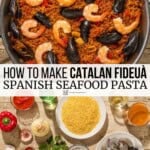
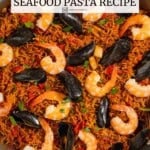
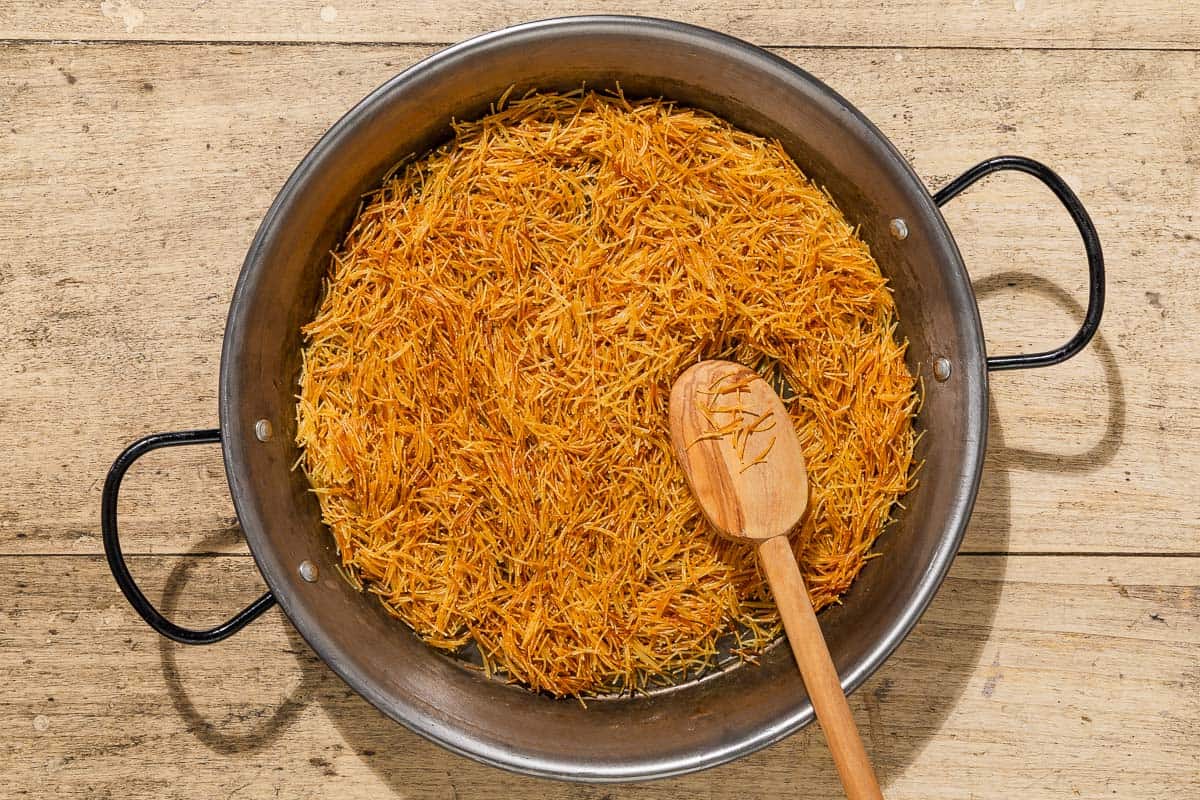
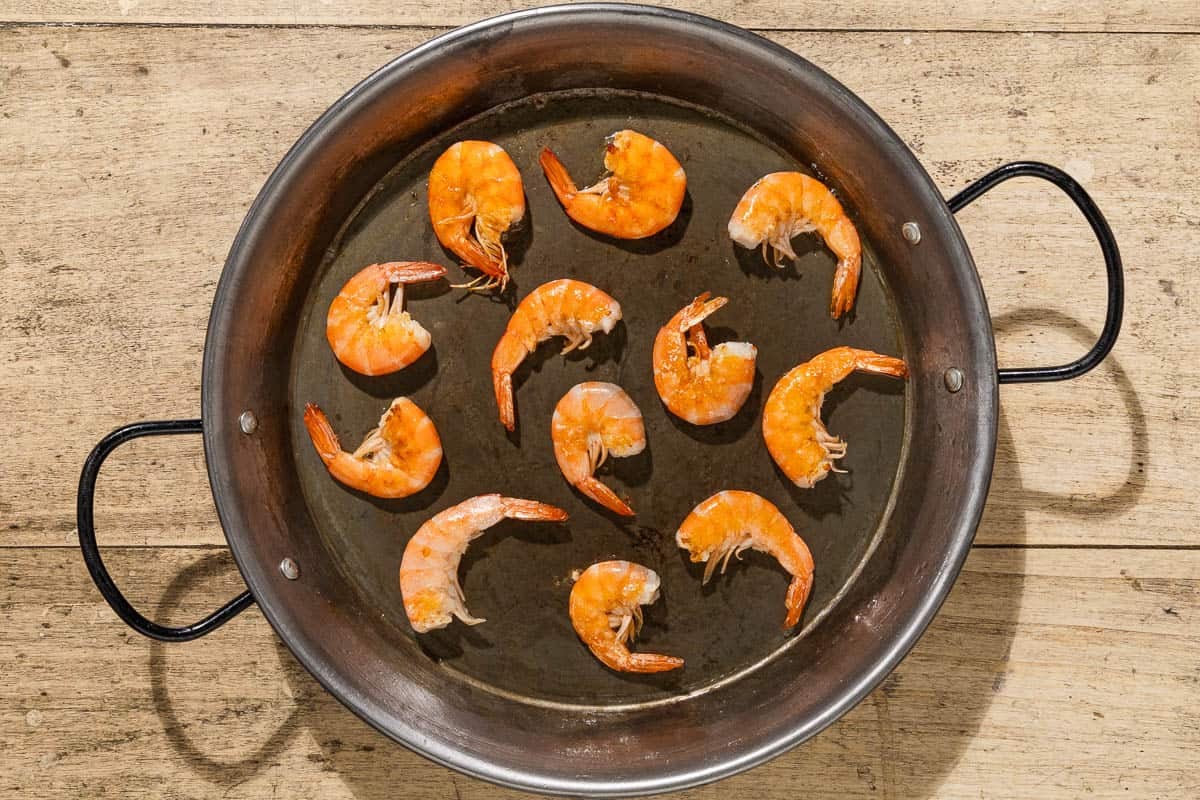
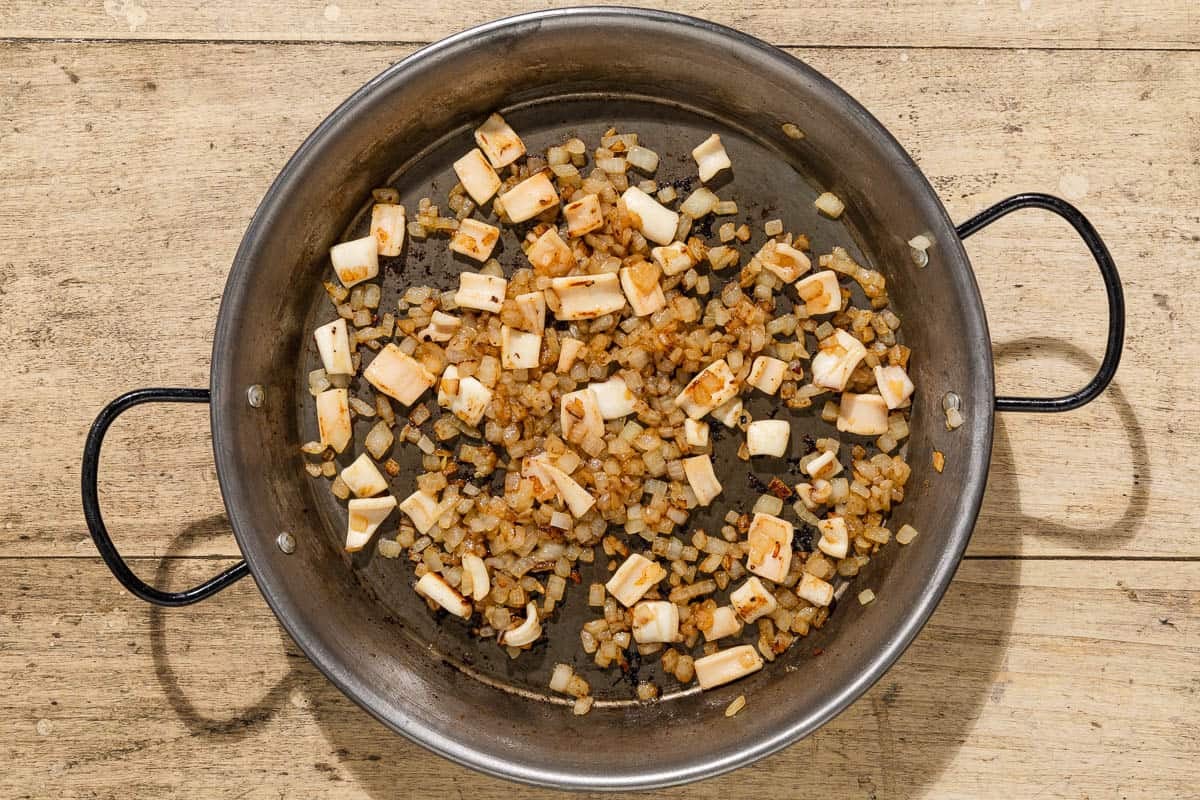
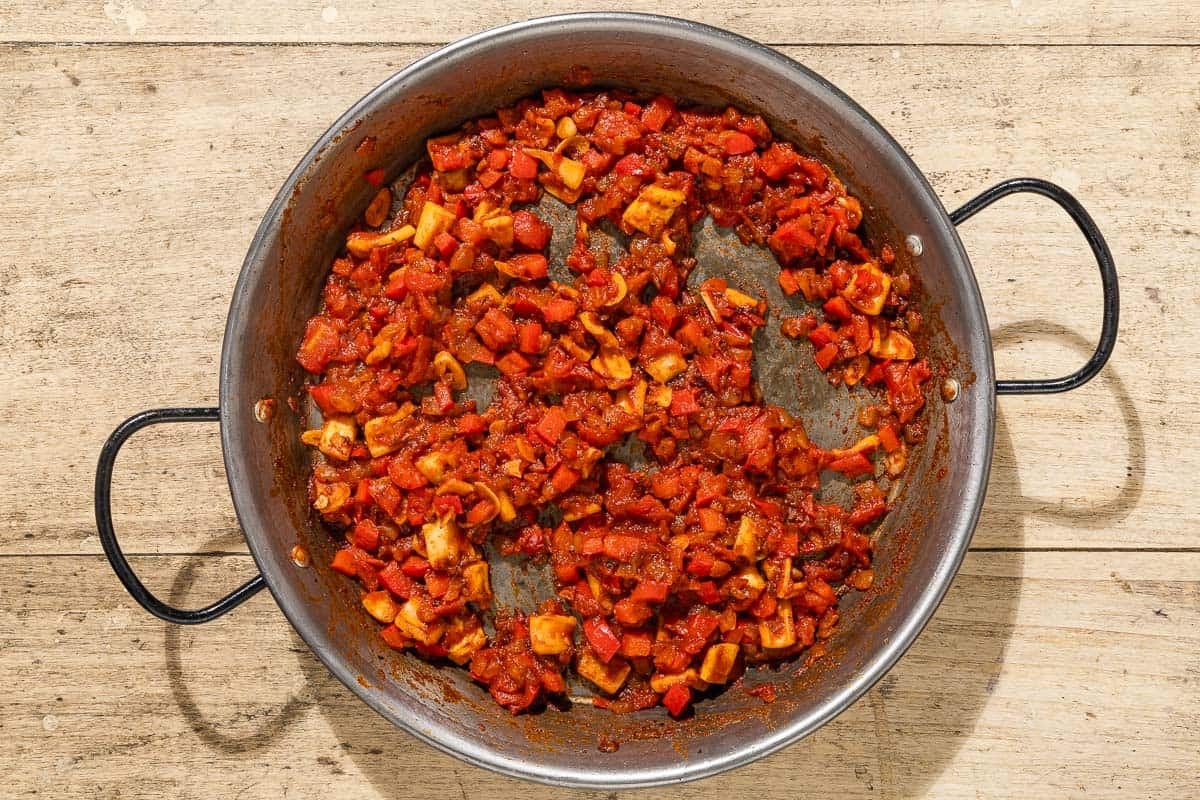
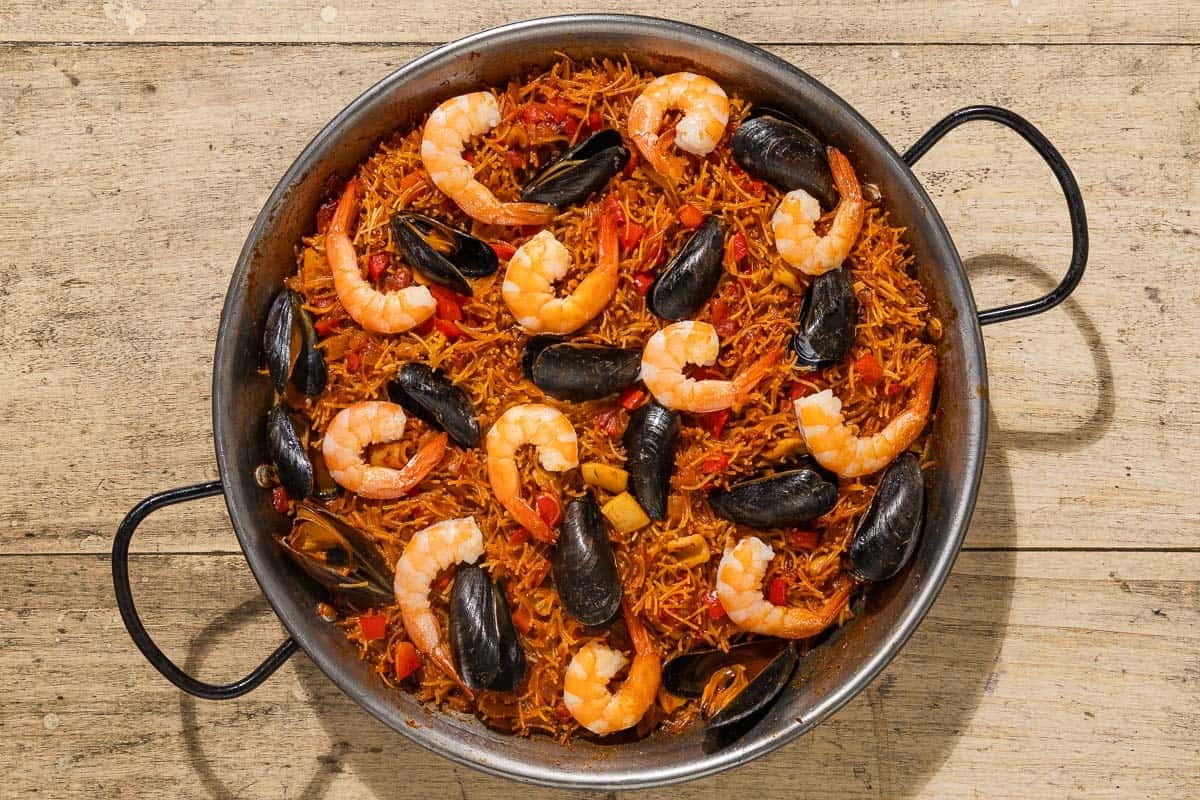
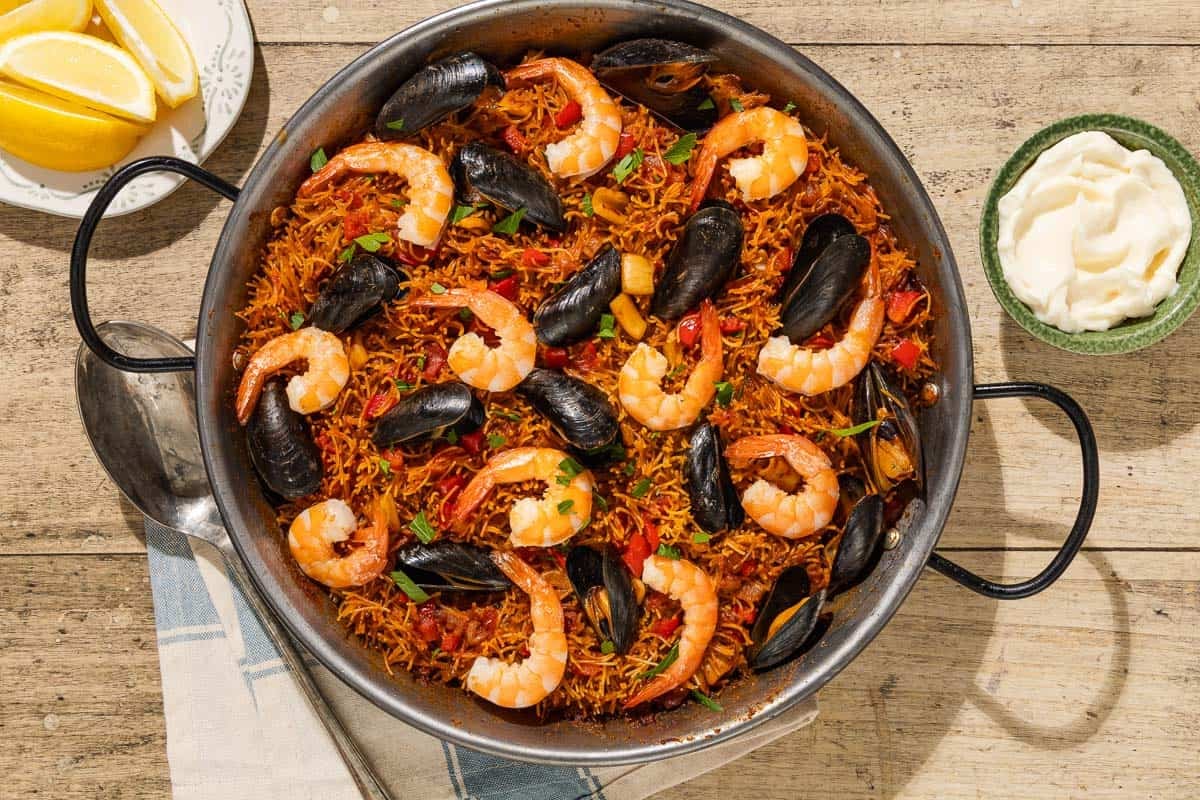
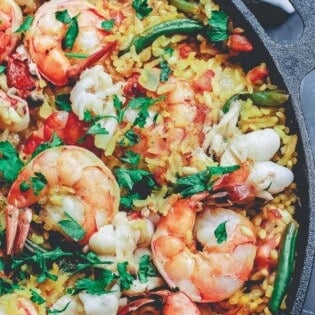
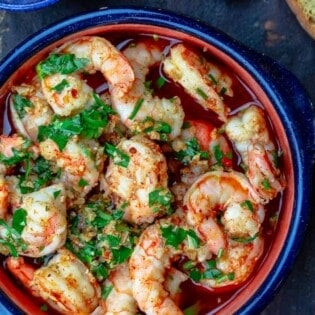
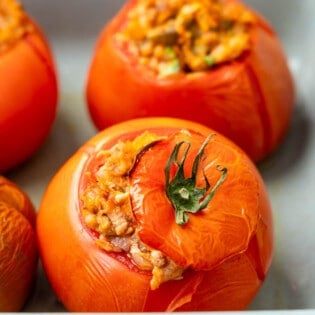
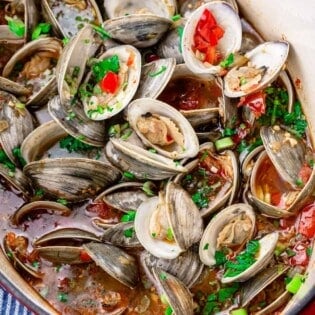
Really nice dish, I highly recommend it as the fideos gets all the flavours. As you named it, the dish was originally made in Gandía ( Valencia), but it is a bit confusing when the title says a Catalan fideuá. The readers may think Gandía is in Catalonia. Thanks!
Sounds delicious and I look forward to making it soon.
Hope you enjoy it, Cathy!
This was very good. We enjoyed it. However, it is not a recipe for a beginner. I would consider myself a good cook and an adventurous cook but this was perhaps the most difficult thing I have made. There were many judgment calls in the making of this recipe. I did cook the shrimp shells on and then added them to the broth. But determining how long to cook the shrimp as not to over cook them when added later had to be determined along with the mussels and when to add them in the end. They took longer to open than I anticipated so my pasta was a bit past it’s prime.
Another delicious and unique offering. Although I have to say that it’s really not a 30 min meal unless you ignore all the prep time and just include the cooking time. The flavors were all delicious and I loved having a recipe for a paella-type dish that uses vermicelli instead. Thank you!!
You are totally correct, Lynn. As we state in the instructions, it takes roughly 25 mins to prep, and 30 minutes to cook. So glad you enjoyed it!